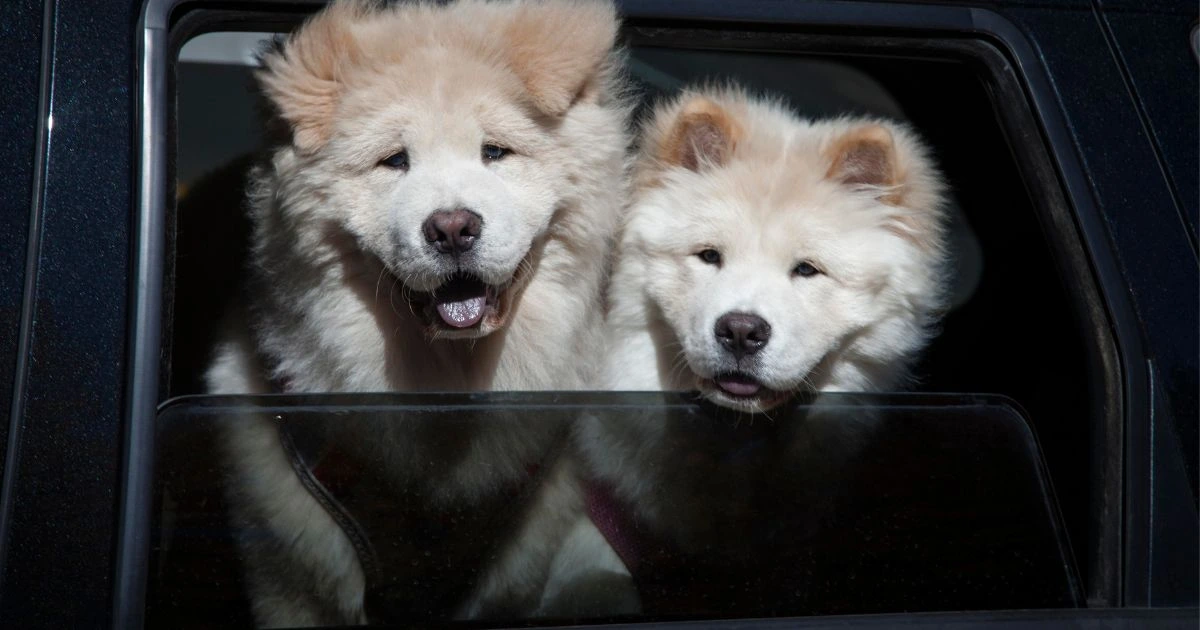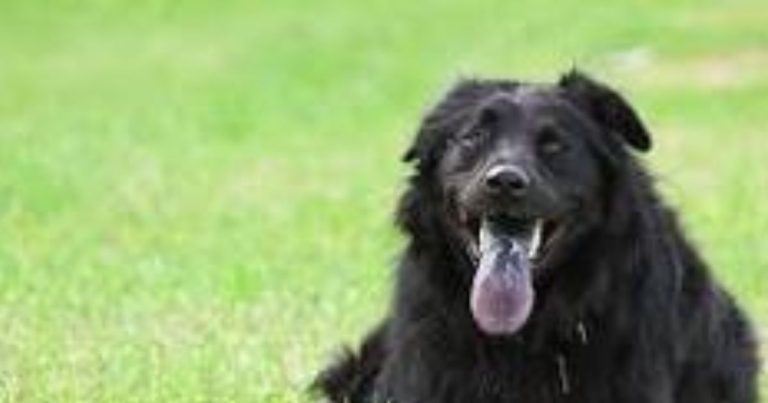Chow Chow Dog: Discover the Unique Traits of This Ancient Breed
Table of Contents
Chow Chow Dog: Uncover the Origins and Characteristics of This Puffy Lion Dog
Chow chows, known as “puffy lion dogs,” have fascinated people for over 2,000 years. They come from ancient China, where emperors loved them. Today, they’re famous for their thick fur and blue-black tongues, called “chao chao dog” in some places.
These dogs are full of mystery. Their unique tongue and independent nature have sparked myths and misunderstandings. This guide will clear up these myths, sharing their true history and striking looks.
Key Takeaways
- Chow chows are one of the oldest dog breeds, with evidence dating back to 206 BC.
- Their blue-black tongues set them apart from nearly all other dog breeds globally.
- Two coat types exist: smooth and rough, both contributing to their “lion-like” visual impact.
- Early socialization is critical to managing their naturally aloof personality.
- They rank among the largest Nordic-type dogs, weighing up to 70 pounds as adults.
The Ancient Legacy of the Chow Chow Dog
Imagine a breed that has walked through centuries of history. From Chinese palaces to Western estates, the chow chow’s story spans over 2,000 years. Their roots are deeply woven into Chinese culture, giving them a regal mystery.
Chinese Imperial Origins: The Dog of Emperors
Before becoming pets, chow chows were for emperors and nobles. Ancient texts show they were hunting companions and temple guardians. Their thick coats and strong builds were perfect for harsh climates and royal duties.
By the Tang Dynasty, owning a chow chow showed high status. This tradition has shaped their reserved nature today.
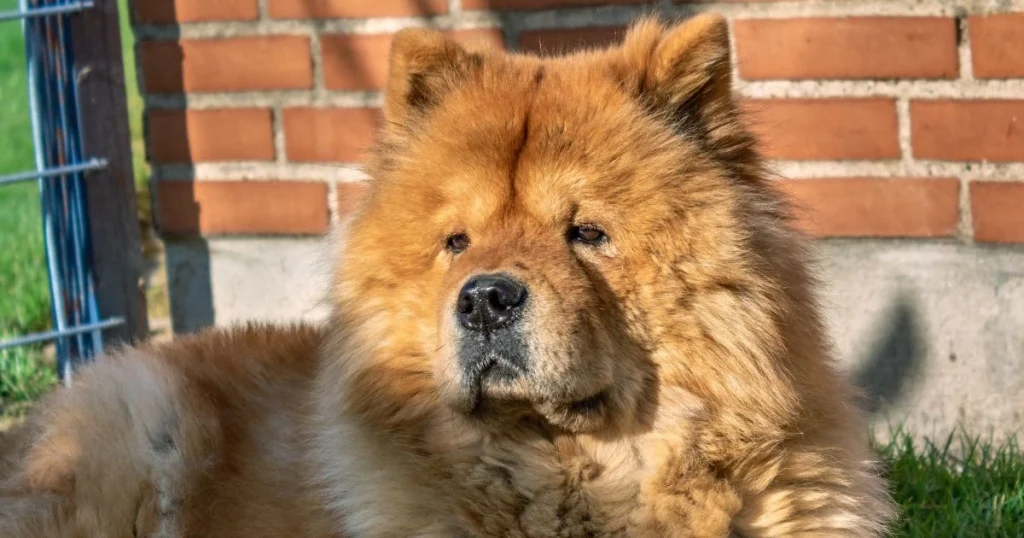
Archaeological Evidence of the Breed’s Antiquity
Clay figurines and bronze carvings from 200 BCE resemble modern chow chows. Excavations in northern China found remains with blue-black tongues and curly tails. These discoveries prove they’re among the oldest breeds, older than many modern dogs.
How Chow Chows Made Their Way to the Western World
European explorers met these dogs in the 1700s during trade missions. They were called “chao chao” in some records. Queen Victoria was a fan, owning two named “Duncombe” and “Mushmeow.”
By the 1800s, they were symbols of wealth in Europe. They blended their ancient heritage with new global fame.
Distinctive Physical Features That Set Chow Chows Apart
Chow Chows are easy to spot with their regal look. Their stiff legs make them seem to walk on eggshells. This unique gait is a breed hallmark.
Their faces are framed by deep wrinkles and small ears. This gives them a scowling look, adding to their dignity.
Their thick double coat is not just for looks. It keeps them warm in cold weather. The outer layer is coarse, and the undercoat traps warmth. Running your hand over them, you’ll feel this dense fur, making them look like lions. Five colors define chow chows: red, black, blue, cinnamon, and cream. Red is the most common.
- Coat Colors: Red, black, blue, cinnamon, cream
- Ear Shape: Rounded triangular ears, standing erect
- Eye Expression: Dark, almond-shaped eyes framed by pronounced wrinkles
Despite their size, their bones are very rigid. Their straight joints and minimal limb angulation make their movements slow. Their round, compact paws add to their sturdy look.
When you see a chow chow’s square shape and scowl, you know it’s an ancient breed. Their design is timeless.
The Famous Blue-Black Tongue: Myth and Reality
When you first meet a chow chow, their striking blue-black tongue catches your eye. This unique trait has puzzled owners for centuries. But what causes it, and why does it matter? Let’s unravel the science and history behind this iconic feature.
Why Chow Chows Have a Blue Tongue
Chow chows have a blue-black tongue due to genetics. Melanin deposits and pigmentation patterns in their DNA create this color. Puppies start pink but darken by 8 weeks—no folklore needed! Breeders check this trait to confirm purity, as it’s a key standard requirement.
Other Breeds That Share This Rare Trait
- Chinese Shar-Pei: Some carry partial blue tongue patches due to shared genetic roots.
- Basenjis and Dobermans: Rare cases show slight blue shading, but not as uniformly as chow chows.
- Hybrids: Mixed-breed dogs may display diluted tongue color if one parent is an chow chow.
What the Blue Tongue Tells Us About Genetic History
This trait hints at ancient breeding patterns. Genetic studies show the chow chow shares tongue pigmentation genes with certain spitz-type dogs, suggesting early cross-breeding in Asia. The tongue acts as a living genealogy chart, proving their link to other rare Eastern breeds.
“A fully blue-black tongue is as vital to the breed as their thick coat,” says the American Kennel Club breed standard. Partial pink tongues may signal mixed heritage.
Next time you see a chow chow’s tongue, you’re not just seeing a quirky feature—you’re glimpsing 2,000 years of genetic history.
Understanding the True Size of a Chow Chow
When looking at a chow chow, they might seem bigger than they are. Their thick double coat adds to their size. Knowing their real size helps owners plan for space and exercise.
Average Weight and Height Expectations
| Breed Trait | Male | Female |
| Height at shoulder | 18-20 inches | 17-19 inches |
| Weight range | 55-70 lbs | 45-55 lbs |
These numbers are for healthy adults. Puppies grow up to 18–24 months to reach full size.
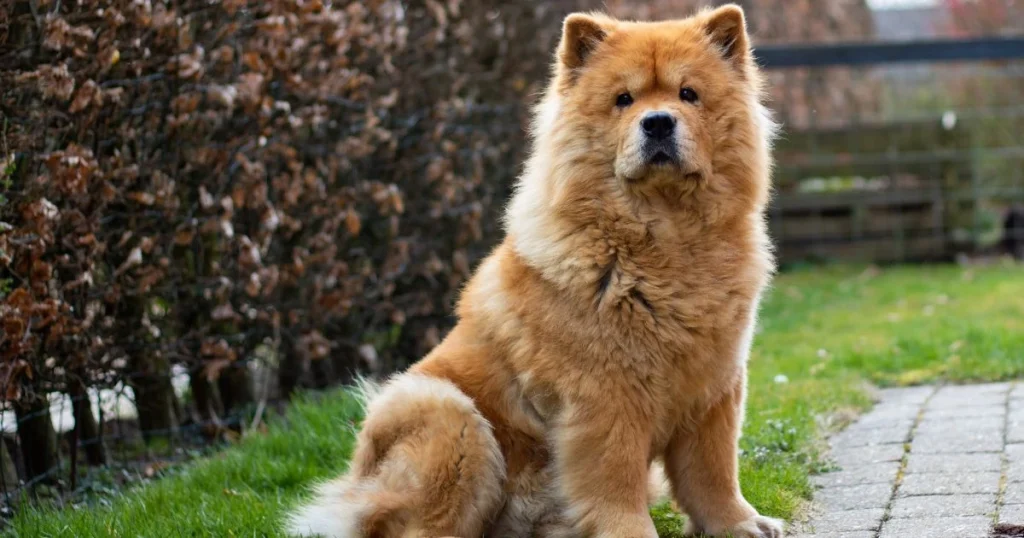
Male vs. Female Size Differences
- Males are bulkier and taller overall.
- Females have a more refined frame but keep the thick coat.
- Both genders need similar care, but space should match their size.
How Their Thick Coat Creates Optical Illusions
A chow chow’s ruff makes them seem bigger. Here’s what to watch for:
- Fluff vs. frame: Their coat traps air, making them seem bigger.
- Body structure: Their stocky build makes them seem larger than they are.
Owners need to think about their true size when choosing a home. A 50-lb chow chow might look like 70 lbs because of their coat. But their real weight decides how much exercise and food they need.
The Lion’s Mane: Coat Types and Grooming Needs
Chow Chows are known for their stunning coats. They have two types: the rough coat and the smooth coat. Both need regular care to avoid tangles and skin problems.
Brushing is a must. Use a slicker brush every day during shedding seasons. This helps with the “blowing coat” phase, when they shed a lot. Outside of shedding times, brush 3-4 times a week. Use a metal comb to untangle undercoat mats.
Bathing should be rare—every 8-10 weeks. This keeps their fur healthy. Washing too much can dry out their skin.
| Coat Type | Key Traits | Seasonal Challenges |
| Rough Coat | Heavy undercoat, stiff outer guard hairs | Massive shedding twice yearly; requires professional trimming |
| Smooth Coat | Shorter, coarser texture; less undercoat | Less shedding but stil needs weekly brushing |
“Neglecting their coat isn’t an option—it’s their armor against the elements,” says a certified dog groomer with 15 years of experience. “Matting can hide wounds or parasites, making inspections critical.”
Get a deshedding tool for weekly use. Check their ears and paws after walks. During heavy shedding, spend 20-30 minutes daily brushing.
Professional grooming every 6-8 weeks is key. It keeps their fur looking great, even for rough-coated dogs. Follow these steps, and your Chow Chow’s coat will stay beautiful.
Are Chow Chows Mean? Debunking Common Misconceptions
People often think chow chows are mean because they seem aloof. But this is not true. Their calm nature comes from their history and instincts, not from being aggressive. Let’s look at the real story behind their personality.
Origins of the “Aggressive” Myth
Chow chows were bred to guard in ancient China. They were trained to be alert and protect their territory. Their loud barks and distance from strangers were seen as aggressive, but it’s just their way of protecting themselves.
The Truth About Their Reserved Nature
Chow chows are not eager to please everyone. They are proud and choose who they want to be close to. They love their family but don’t always want to be around people. Their quiet nature is just their way of showing they value their space.
Socialization: The Key to Balanced Behavior
Training them early can change their natural wariness. Socializing them from a young age helps them get used to new things. Here are some important steps:
- Introduce them to different places by 12 weeks old
- Use positive rewards for calm behavior around others
- Respect their need for alone time and avoid pushing them
With patience and understanding, chow chows can become loving and calm friends. Their image as being mean fades when people see their true nature of dignity and loyalty.
Decoding Typical Chow Chow Behavior Patterns
Understanding chow chow behavior shows a breed with ancient instincts. Their actions, though puzzling, come from guarding and liking solitude. Let’s explore what drives their choices.
Their Natural Aloofness with Strangers
Chow chows are cautious with new people. They don’t rush to greet; instead, they watch from afar. This isn’t rudeness—it’s a survival instinct. You may notice they ignore guests, sticking close to those they trust.
- May freeze or retreat when approached by strangers
- Rarely seek attention from visitors
- Warm up slowly with consistent positive experiences
Loyalty and Bonding with Their Chosen People
Once trust is earned, chow chows become loyal friends. Their bond with family is strong but quiet. You’ll see this loyalty in their quiet presence, not constant play.
- Choose a primary caregiver to rely on emotionally
- Express affection through eye contact or sitting nearby
- Resist forced physical affection until comfortable
Territorial Instincts and What They Mean for Owners
Chow chows see their home as their territory. This trait needs careful handling to avoid issues. You must balance their protective nature with clear rules.
- Mark areas of the home as “theirs” through posturing
- Alert to intruders with deep barking
- Require secure fencing to prevent escape attempts
Health Considerations When Bringing a Chow Into Your Home
Welcoming Chow Chows into your home means focusing on their health right away. These dogs do best with owners who know their health risks and act early to prevent problems.
- Hip and elbow dysplasia: Joint issues that need regular vet checks to keep them moving well.
- Thyroid disorders: Blood tests can find imbalances that affect energy and metabolism.
- Eye conditions like entropion: Inward-rolling eyelids might need surgery to prevent irritation.
- Immune-related disorders: Regular checks help catch problems early.
Chow Chows can also have skin issues under their thick fur, more so in humid weather. Their fur holds moisture, so brushing weekly and keeping their skin dry is key. Keeping them at a healthy weight is also important to avoid joint strain. Aim for a lean body through controlled portions and gentle exercise like 20-minute walks.
Preventive care includes yearly X-rays for joints, thyroid tests, and dental cleanings. Plan for the costs: genetic tests are $200–$300, and surgeries like entropion correction can be over $1,500. Getting pet insurance that covers hereditary conditions is a wise choice.
With the right care, Chow Chows can be great companions for 8–12 years. Taking these steps ensures they stay healthy and active for their whole life.
Training Challenges and Rewards: What to Expect
Understanding chow chow behavior starts with recognizing their independent streak. These dogs aren’t bred to follow commands automatically—they question *why* they should obey. This mindset shapes every training session, requiring owners to adapt strategies to match their unique personality.
Why Their Responses Defy Traditional Methods
Chow chows aren’t resistant just to be difficult. Their history as guardians and hunters bred a think-first, act-second approach. Unlike breeds eager to please, they need clear reasons to comply. Harsh corrections often backfire, triggering stubbornness or distrust.
Effective Strategies That Work With Their Nature
- Positive reinforcement: Reward-based training builds trust. Treats, praise, or playtime signal success without pressure.
- Consistency matters: Short, daily sessions reinforce rules without overwhelming their patience.
- Early socialization: Introduce puppies to new people and environments before territorial instincts solidify.
What Success Looks Like
Expect calm obedience, not show-dog enthusiasm. Well-trained chow chows obey because they respect your leadership, not because they’re seeking constant praise. Leash walking, controlled greetings, and quiet house manners mark progress. Celebrate small wins—this breed’s loyalty grows through mutual respect, not forced compliance.
Living With a Chow Chow: Daily Life and Adaptability
Having chow chows in your home means you’ll follow a routine that suits their calm nature. They need about 20-30 minutes of walking and short playtime each day. This keeps them happy without needing too much activity.
How well they adapt depends on where you live:
- Apartments: They do well if you keep them mentally stimulated and in quiet places.
- Yards: They like having a safe area to watch the world but don’t need to be outside all the time.
Inside, they have special needs. Their thick fur likes cool places, like tile floors or shaded spots. They’re clean animals and don’t need constant watching. They love to watch what’s going on from a favorite spot, like a couch or window.
“Chows are like furry sentinels—they guard their space without barking excessively,” notes the American Kennel Club. This makes them ideal for those seeking a low-drama companion.
Family dynamics are important. Introduce children and other pets slowly. They might not always want to play, but they bond deeply with their family. They’re polite with visitors but won’t overwhelm them.
Traveling? Chow chows are okay with crates or carriers. Good pet-sitters will keep them calm. Sticking to routines helps them feel secure during changes.
To live well together, respect their independent nature. Keep evenings quiet, provide cool places to rest, and talk to them patiently. For those who want a calm companion, chow chows are a great choice.
Is This Breed Right for You? Honest Assessment
Deciding to get a chow chow needs serious thought. Before bringing one home, think about these important points. They help make sure this breed fits well with your lifestyle and what you can offer.
Lifestyle Compatibility Factors to Consider
- Experience Level: Best for those who already know how to care for dogs because of their independent nature.
- Time Commitment: They need a lot of grooming (45+ minutes a week) and regular training.
- Living Space: They do well in quiet homes. Apartments are okay, but a safe yard is better.
- Family Dynamics: They’re best in homes without young kids; they like peaceful places.
Financial Investment in a Chow Chow
Being a pet owner means spending a lot of money upfront and every year:
- Puppy Purchase: Costs range from $1,000 to $4,000 from good breeders.
- Annual Care: Expect to spend $2,000 to $4,000 a year on food, grooming, and vet visits.
- Health Costs: They might get hip dysplasia or thyroid problems, which can be expensive to treat.
Who Should and Shouldn’t Own This Distinctive Breed
| WHO SHOULD OWN | WHO SHOULD AVOID |
| Experienced owners who respect boundaries | First-time owners seeking obedient, eager-to please pets |
| People with time for daily care routines | Families with small children or high social demands |
| Calm households valuing loyalty over constant activity | Owners unable to manage separation anxiety tendencies |
Choosing the right life for a chow chow means a happy and rewarding relationship with this ancient and noble breed.
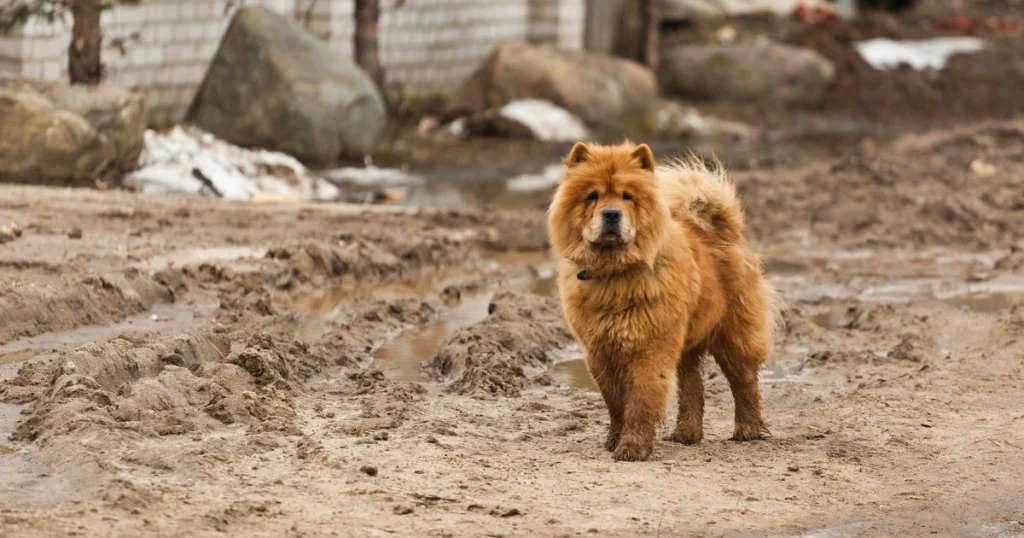
Conclusion: The Enduring Appeal of the Majestic Chow Chow
Chow chows are a captivating breed, blending ancient history with today’s companionship. Their roots go back thousands of years, making them one of the oldest dog types. Their blue tongues, thick coats, and noble look show their long history of breeding.
These dogs are not for everyone. They need patience because of their independent nature. But, their loyalty and quiet love make them great companions for those who are patient and dedicated.
When you own a chow chow, you must know their needs. Their thick fur needs regular grooming, and they need early socialization. It’s also important to watch their health closely, as their size and genetics require special care.
Yet, their unique presence offers a rare mix of dignity and friendship. This draws many to the breed.
Before getting a chow chow, do your homework. Talk to breed-specific rescues or ethical breeders to see if they fit your lifestyle. These dogs do best with owners who respect their quiet nature and are committed to caring for them. The chow chow’s lasting appeal is in its ability to mix ancient charm with modern-day friendship.
FAQ
What is the size of a Chow Chow?
Chow Chows usually weigh 45 to 70 pounds. They stand about 17 to 20 inches tall. Males are often bigger than females.
Are Chow Chows mean?
No, Chow Chows are not mean. They can seem shy or independent. Early training and socialization help them be well-balanced.
What are the key characteristics of Chow Chow behavior?
Chow Chows are very loyal and protective. They can be wary of strangers. They need time to bond and their behavior varies.
What should I know about grooming a Chow Chow?
Chow Chows have a thick double coat. They need regular brushing to prevent matting. Professional grooming helps keep their coat healthy.
What common health issues are Chow Chows prone to?
Chow Chows may get hip and elbow dysplasia, thyroid issues, and entropion. Regular vet visits and monitoring their weight can help manage these issues.
How do Chow Chows behave with children and other pets?
Chow Chows can be loving and protective. But they may be territorial. Always supervise them with children and other pets for everyone’s safety.
What is the lifespan of a Chow Chow?
Chow Chows live between 8 to 12 years on average. Proper care, including a balanced diet and vet visits, can help them live longer.
How should I prepare for training my Chow Chow?
Training a Chow Chow needs patience and understanding. Use positive reinforcement and consistent training. They don’t respond well to harsh corrections.
Can Chow Chows adapt to apartment living?
Yes, Chow Chows can live in apartments if they get enough exercise. Daily walks and playtime meet their needs.
What is the alternative spelling for Chow Chow?
“Chao chao dog” is another way to spell Chow Chow. Both names refer to the same breed.

